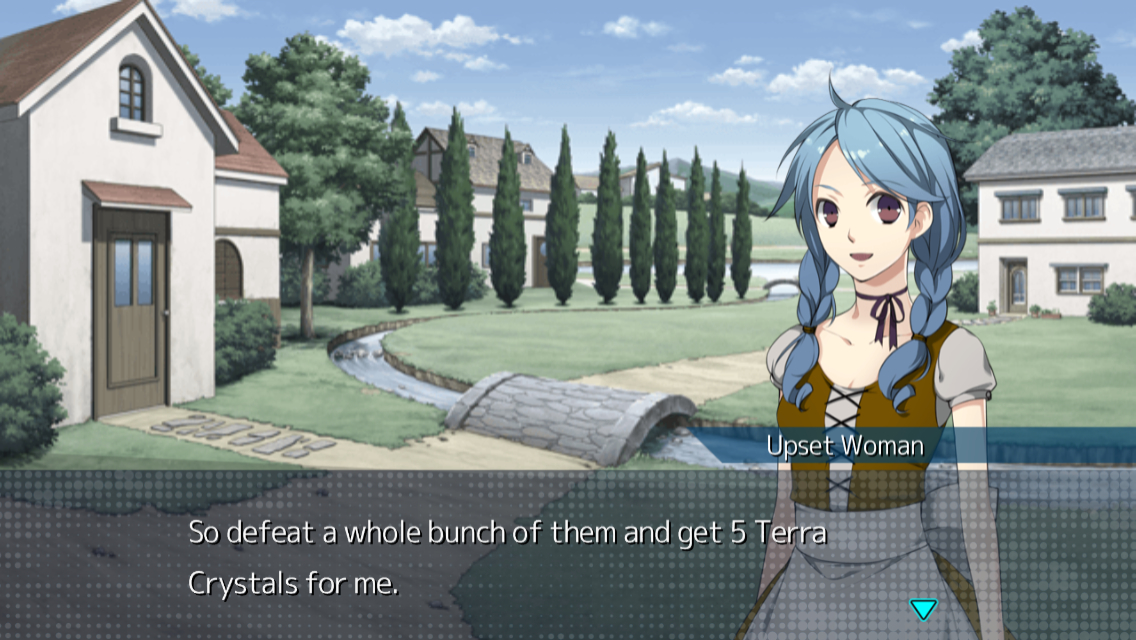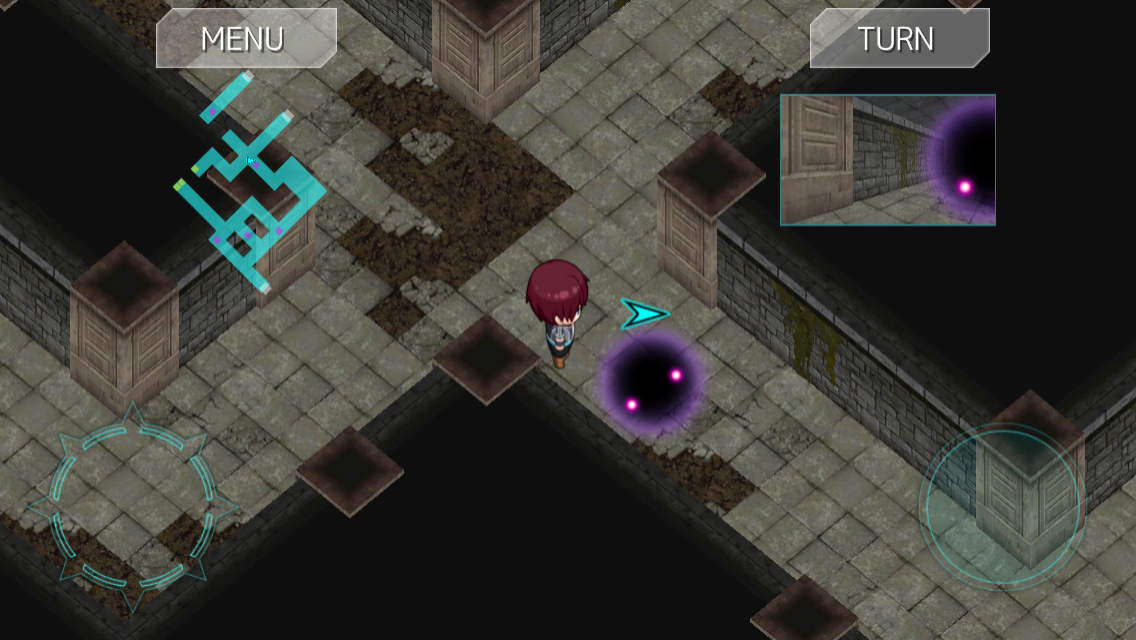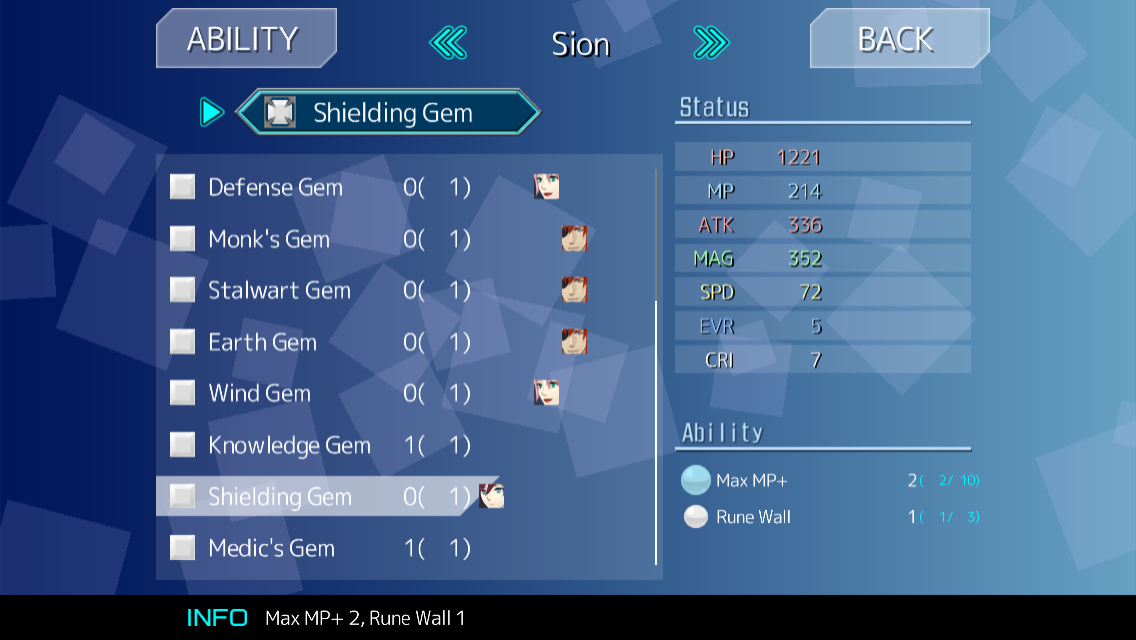 It’s been a couple of months since Kemco’s last release on iOS, the mediocre strategy-RPG Legend Of Ixtona ($8.99). That game was developed by WorldWideSoftware and was if nothing else different from Kemco’s usual fare. Interestingly enough, their latest game, Tears Revolude ($3.99), is once again developed by WorldWideSoftware and also a bit different from their norm. Fortunately, it pulls off what it’s going for a bit better than Ixtona did, but unfortunately, only a little bit. Still, I’m a little impressed at what the developer has set up here from a technical perspective, and I hope it bodes well for the future.
It’s been a couple of months since Kemco’s last release on iOS, the mediocre strategy-RPG Legend Of Ixtona ($8.99). That game was developed by WorldWideSoftware and was if nothing else different from Kemco’s usual fare. Interestingly enough, their latest game, Tears Revolude ($3.99), is once again developed by WorldWideSoftware and also a bit different from their norm. Fortunately, it pulls off what it’s going for a bit better than Ixtona did, but unfortunately, only a little bit. Still, I’m a little impressed at what the developer has set up here from a technical perspective, and I hope it bodes well for the future.
This game returns to a more standard JRPG format of having you travel from town to town, clearing out an associated dungeon or two of monsters before picking up a plot coupon that will send you to the next town. Our hero this time is Sion, a treasure hunter and art fanatic who is accompanied on his adventures by his faithful companion Michelle. While on a routine exploration one day, they come across a mysterious girl named Liara who has no memory of who she is or where she came from. Not longer after that, they discover that The Guild, a sort of regional power, is after Liara. The heroes go on the run, and things unfold from there. It’s a well-worn story if you’ve played many of Kemco’s games, but it reads well enough thanks to a decent localization, making for satisfactory enough glue for the gameplay.
WorldWideSoftware is debuting a new engine here, and at least by Kemco’s standards, it’s a nice step forward. The dungeon backgrounds, both in and out of battle, are fully 3D, with characters and monsters represented by animated 2D sprites. While you generally explore from an overhead perspective, a small window in the corner shows you a first-person view of what your characters are seeing. The trade-off is that Tears Revolude chews through your battery a little faster than most of Kemco’s games, and the framerate isn’t much better than the problematic 2D engine used in other titles. Still, it’s clear that 2D engine wasn’t getting any better over time, so I’m glad to see it replaced. Without the trusty back catalog of assets to fall back on, the scope of this game is a bit narrower, with a menu-based overworld and similarly menu-based towns. The visual variety between dungeons is fine, but within each dungeon, everything basically looks the same. You’ve got a detailed mini-map that tells you just about anything you’d want to know, though, so you probably won’t get lost.
The battles are fairly traditional turn-based affairs. The only real twist to them is a special meter that fills up as you give and receive damage. Characters can use solo special attacks that will consume one of the four segments of the meter, or you can bring in up to three other characters on the attack at the cost of one segment per participant. The special attacks require you to touch dots in a pattern while a timer counts down. The more you can touch, the stronger the resulting attack will be. The meter fills up pretty quickly, so you can and should use it fairly liberally. You’ll also want to make use of your characters’ individual skills. They work like any other RPG, consuming MP with each use. In this game, the more you use a skill, the more powerful it becomes. With that increase comes a higher consumption of MP, however, so you’ll want to be careful how you pace that growth. Plenty of other games have used a similar system, but it’s at least uncommon in the JRPG subset.
While the game uses random encounters, they’re visible on the map and consistently placed. In a way, this is more annoying than the invisible variety, since they’re basically unavoidable, respawn when you leave a section of the map and come back, and are placed such that you’ll be fighting almost constantly. It’s particularly annoying if you forget to bring a teleport crystal to use after you kill the boss at the end of the dungeon. You’ll have to hoof it back out, fighting every piddly encounter on the way. Almost every sub-quest in the game has you gathering up a certain number of items dropped by enemies in the next dungeon or two, but you’ll have an armful of whatever you need just from fighting the mandatory battles. All the enemies are marked clearly on your map, though, so you at least won’t have to worry about stumbling on them unprepared. The treasure is marked, as well, so there isn’t really much in the way of meaningful exploration to be done. It’s too bad in one way, because the dungeon design here is actually pretty neat, but I can appreciate that most people don’t enjoy mapping this stuff out the way I do.
The customization system in the game is pretty fun to tinker around with, at least. I’ve already mentioned the skills and how they grow. Each character can also equip an assortment of accessories and gems which convey a variety of bonuses. Taking a page from Final Fantasy 7, the number of gems you can equip is based on your weapon. The weapon system is pretty unusual. You’ll never actually buy new weapons. Instead, you use your gold to modify and upgrade existing ones. You can add gem slots to each character’s weapon, improve its stats, or even modify it into a different, but related form. The different forms will teach your character different skills, so there’s potential for quite a bit of variation between players.
Unusually for a Kemco game, Tears Revolude supports Game Center achievements, and it even rewards you with some of the game’s premium currency for unlocking them. You’ll also earn that currency by winning battles with enemies, so you can certainly grind it out if you’d like. The typical selection of cheat items is available in the game’s shop, but as is frequently the case with WorldWideSoftware’s titles, there are also some substantial dungeons you’ll need to buy your way into. You’ll probably earn enough of the currency just by playing to get most of the way to unlocking them, but I still really don’t like it when Kemco does that sort of thing. The localization generally does its job, and I’m particularly impressed with how it navigated around dealing with Michelle’s character. Cultures can sometimes be different in very big ways, and Michelle probably wouldn’t have flown in the West as she was in the Japanese version. The character voices kind of give things away, but I give the localization staff top marks for trying.
Tears Revolude isn’t a terribly long game, but you’ll get a good 10-15 hours out of it. The weapon system is interesting enough to poke at, the story isn’t awful even if it seems to be cobbled together from spare parts, and the new engine gives things just enough of a fresh coat of paint that you might not notice you’re running through some very familiar motions. It’s probably enough to temporarily satisfy the hunger of JRPG fans, though it’s unlikely to do much for anyone else.



